Reminder of Upcoming Meetings and Events:
- Georgia Corn Short Course: February 12, 2025 @ 8:00 am – 3:15 pm at the UGA Tifton Campus Conference Center. Registration is Required.
- Georgia Conservation Tillage Alliance Meeting: February 18, 2025 1-5 pm – February 19, 2025 8:30- Noon at the Georgia Museum of Agriculture in Tifton, GA. Registration is Required.
- Appling County Row Crop Weed Management Meeting: February 20, 2025 @ 8:00 am at the Appling Ag Center. Call 912-367-8130 to RSVP in order to plan for meal.
———————————————————————————————
Appling County Cotton Meeting Recap
There was a nice turnout at the cotton meeting. We would like to send a thank you to the Georgia Cotton Commission for help funding the meal and to our speakers for providing their information and recommendations. See below main points from each speakers presentation at the cotton meeting.

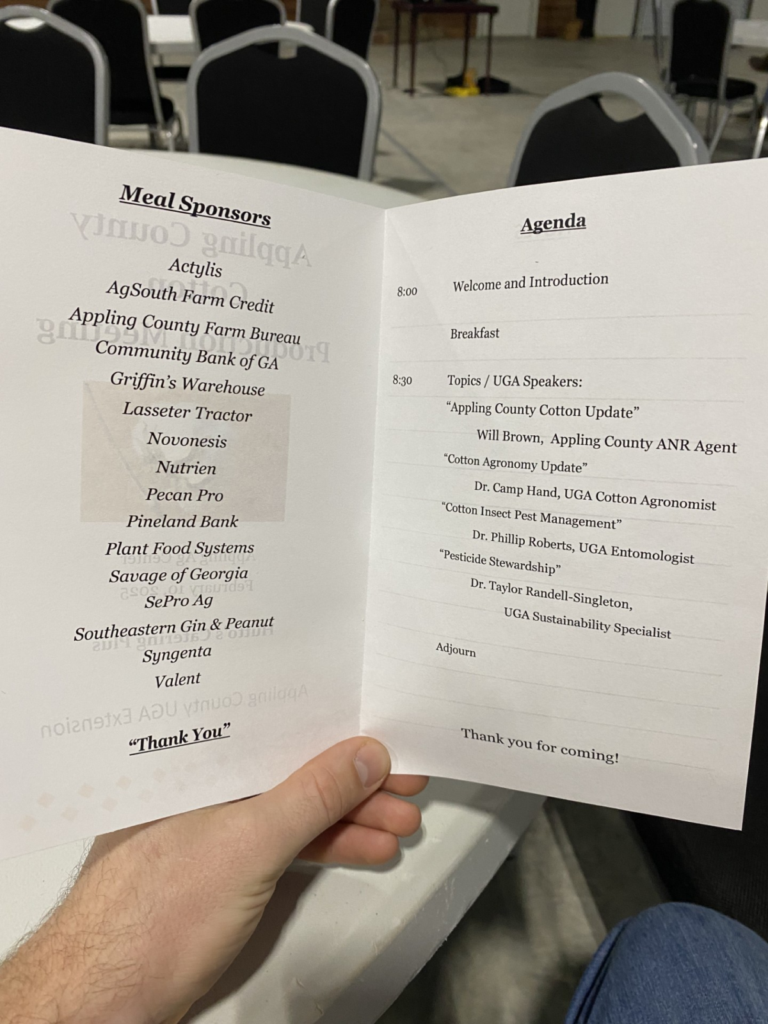
———————————————————————————–
Main Points from Will Brown, Appling County ANR Agent
- Cotton Variety Trials Conducted at the Southeastern Gin were discussed, data from these trials is pictured below.
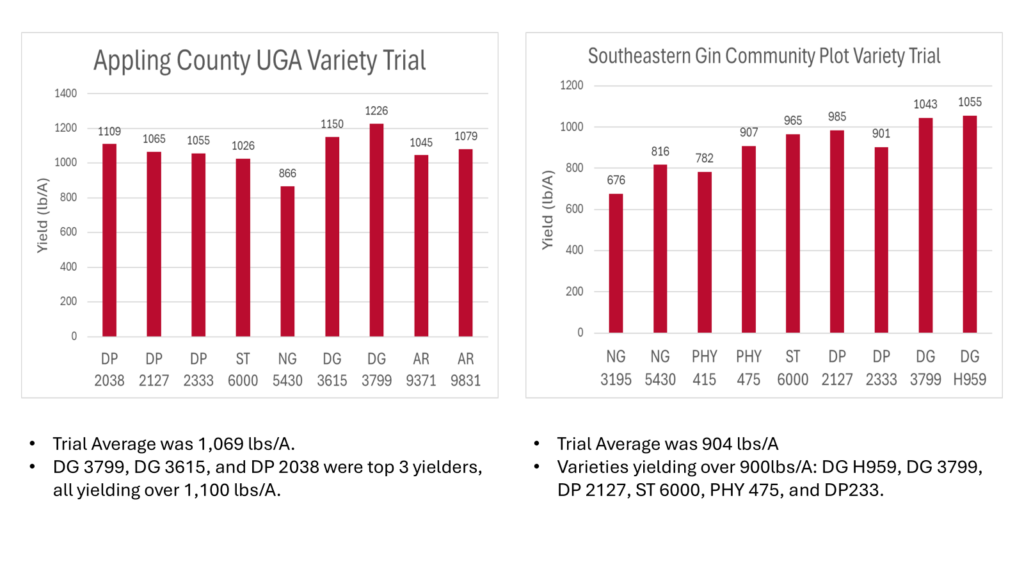
- CLRDV induced Bronze Wilt observations in Appling County fields and variety trials were discussed. Notice from the graphs below that % disease was low for our county. From field surveys the highest percent disease was 5%. Notice planting date differences and varietal differences.
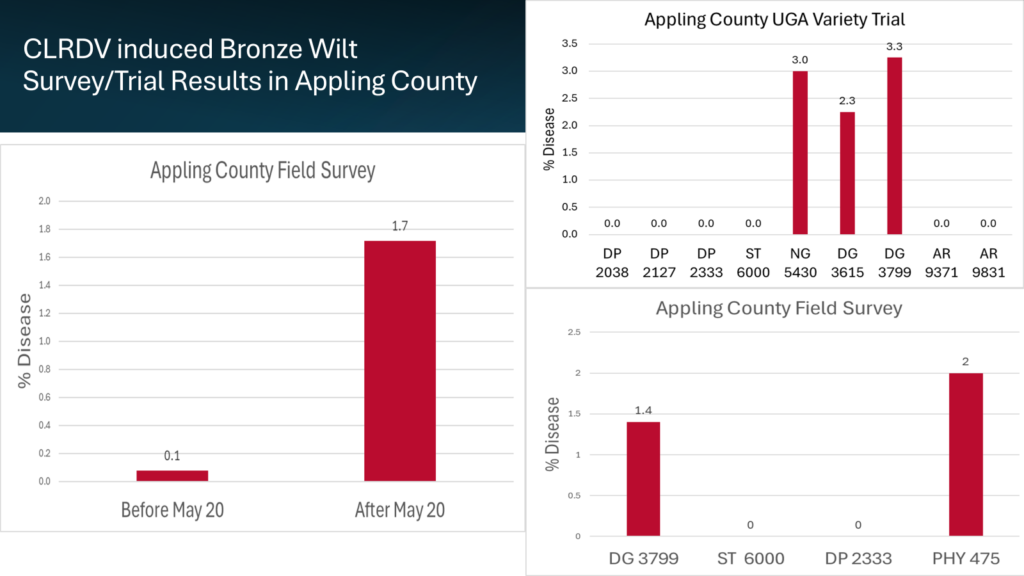
- Hurricane Helene’s impact on last years cotton crop in Appling County, cotton fields were impacted from anywhere between 10-45% yield loss depending on growth stage (%openboll). Yield loss across the board was 30% or more.
- A handout was also given for 2025 cotton budget sheets, use the following link for these sheets: https://agecon.uga.edu/extension/budgets.html
————————————————————————————
Main Points from Dr. Camp Hand, UGA Cotton Agronomist
- Talkin’ Cotton Podcast on Apple and Spotify
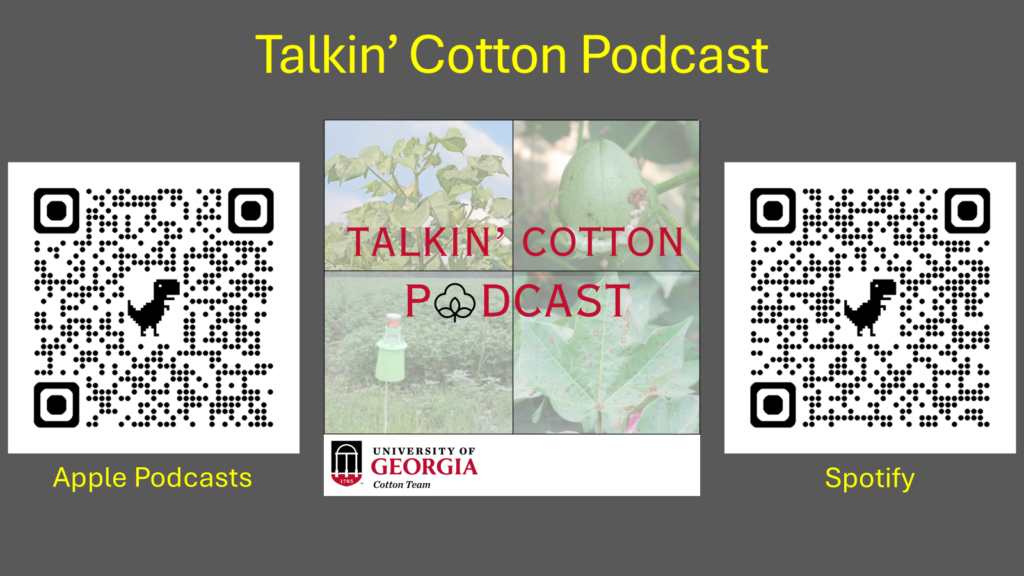
- 2025 On-Farm Cotton Variety Trials
- PGR Responsiveness of Varities
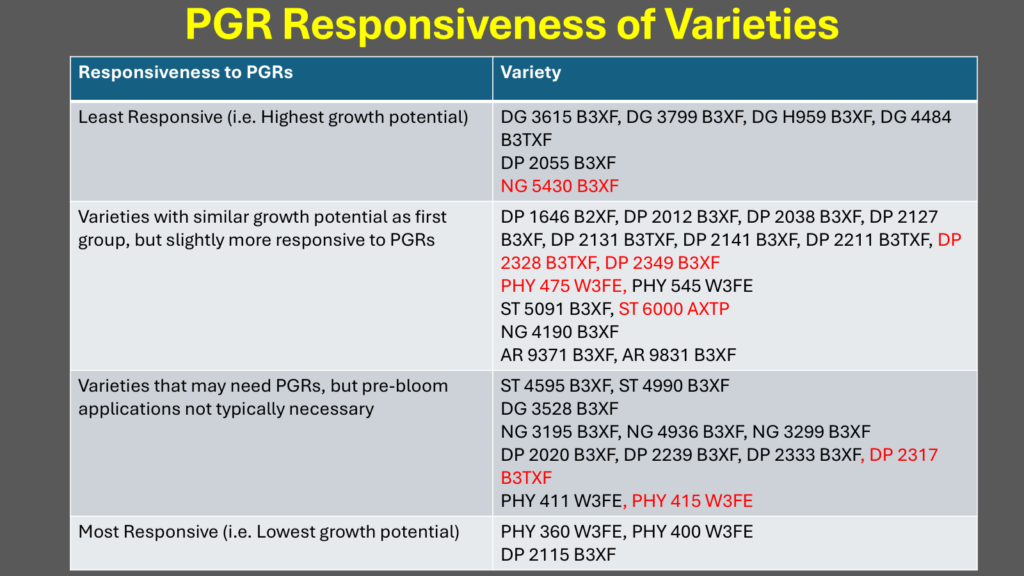
- Virus Induced Bronze Wilt
- Saw up to 50% symptomatic plants in some areas of the state (Brooks, Mitchell, Colquitt) with a yield lag occuring.
- Varieties commonly observed with “Bronze wilt like” symptoms include DG 3615, DG H959, DG 3799, NG 5430, and PHY 475.

- Deer Research Update
- Late planted early season variety VS. late planted mid-full season variety
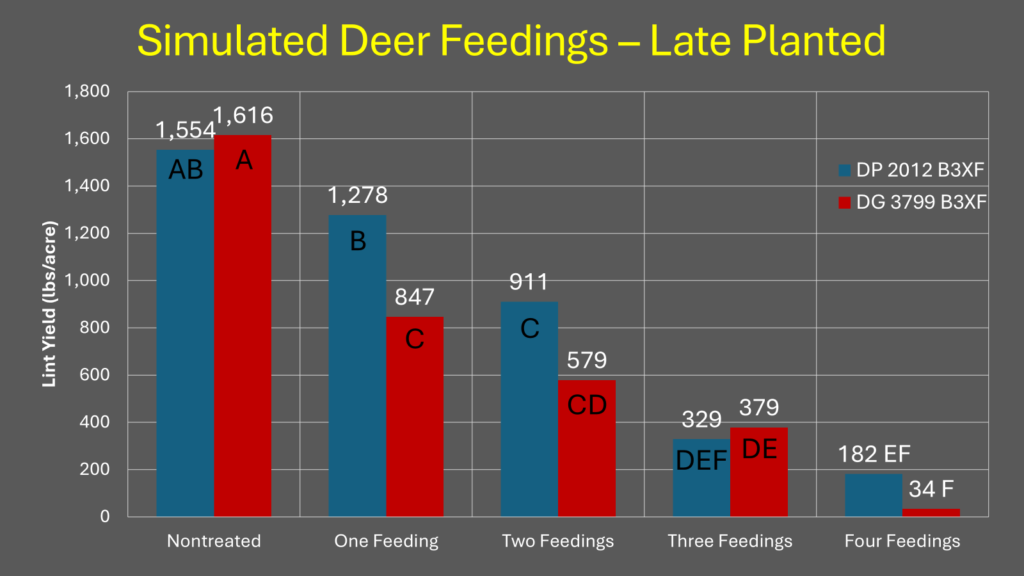
———————————————————————————————–
Main Points from Dr. Taylor Randell-Singleton, UGA Sustainability Specialist
- Come to Weed Meetings to learn more about “Herbicide Strategy”
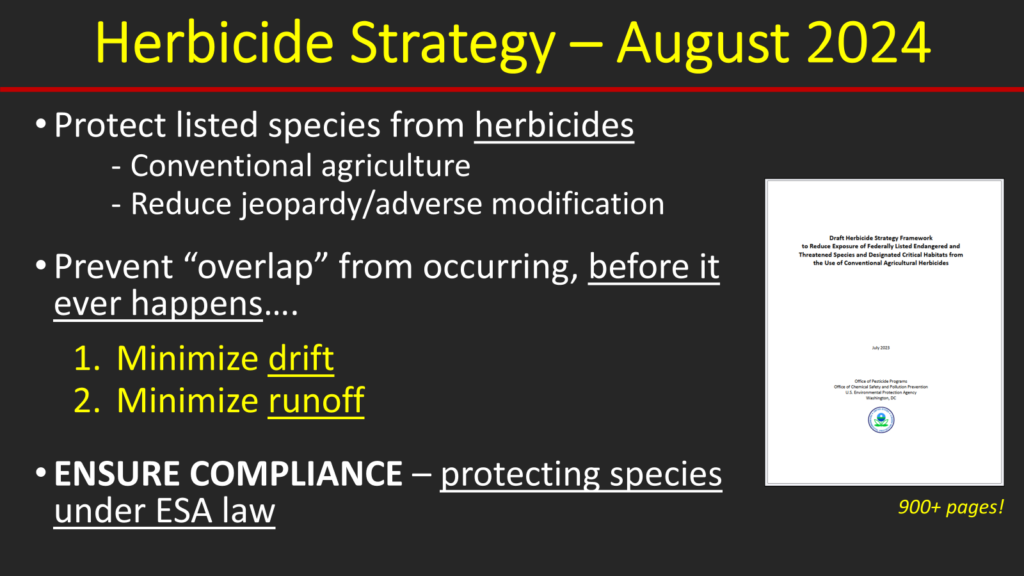
- Field Watch site to aid in communication between beekeepers, producers, and applicators.

- Businesses to utilize for recycling containers.
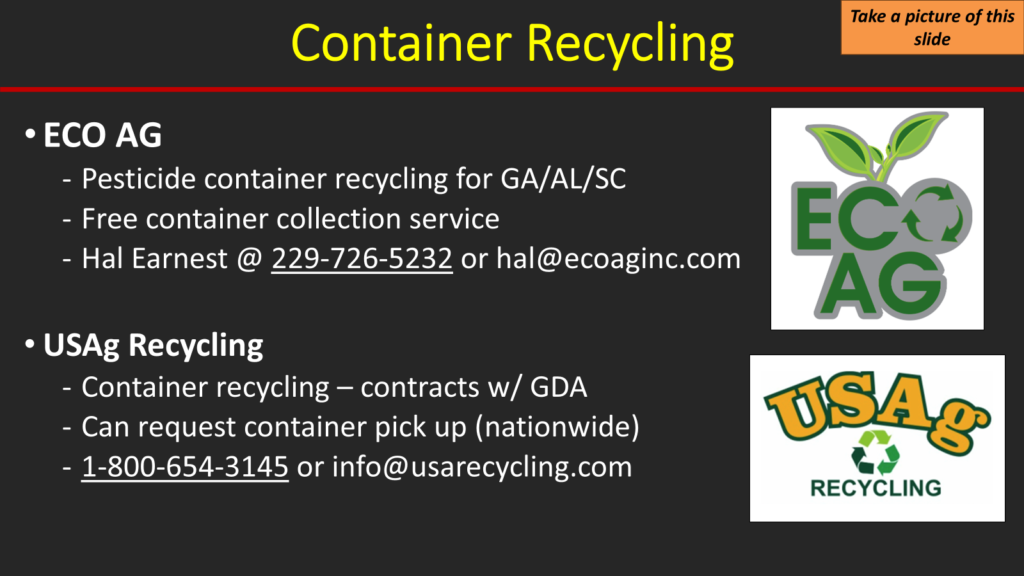
—————————————————————————————
Main Points from Dr. Phillip Roberts, UGA Cotton Entomologist
- 2025 UGA Scout School dates and locations.

- Thrips
- Threshold is 2-3 thrips/plant and immatures present.
- Susceptible growth stages: Cotyledon – 4leaf.
- At plant treatments: ThryvOn, Aldicarb, Imidiacloprid or Orthene in-furrow spray, Seed Treatments
- Foliar Treatments: Acephate, dicrotophos, dimethoate (spinetoram)
- Aphids
- Do not see consistent yield response from treatments
- Be more aggressive on late planted cotton (maturity delays)
- Consider aphid control when making plant bug applications
- Treatment options: Transform, Centric, Admire Pro
- Tarnished Plant Bug
- Infested and treated acres rising over the past few years.
- Thresholds: < 80% square retention of pinhead squares and numerous plant bugs observed
- First 2 weeks of squaring: 8 bugs/100 sweeps or 1 bug/6 row feet on drop cloth
- Third week of squaring through bloom: 15 bus/100 sweep or 3 bugs/6 row feet on drop cloth
- Pyrethroid resistance reported in 2024 in SW Georgia.
- Plant bugs typically feed on small squares but will feed on medium and large squares too, resulting in dirty blooms.
- Typically not a problem in our area but be cautious.
————————————————————————————————————-
ARC/PLC and Crop Insurance Decisions (Dr. Serinna Liu)
My general answers regarding ARC/PLC and STAX are the following:
If your farm has seed cotton base acres, enrolling in PLC or ARC is generally a better option than STAX based on current price projections. However, if you don’t have seed cotton base acres or if they are significantly lower than your planted cotton acres, STAX can help mitigate some crop loss risk but will provide limited revenue protection this year. ARC/PLC are free programs offered by the Farm Service Agency of USDA. However, farmers need to pay for the crop insurance premium to enroll in STAX.
The decision to choose between ARC and PLC is a farm-by-farm and crop-by-crop decision. To assist in this decision between ARC and PLC, you may find the Texas A&M ARC/PLC decision aid useful: https://afpc.tamu.edu/tools/farm/farmbill/2018/. In general, PLC may be the better choice than ARC for most of the row crops in Georgia unless the farm is located in a county with a high risk of hurricane-related losses or other weather events causing crop losses.